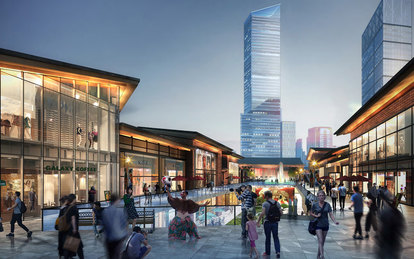Mixed-Use Convergence & The Future of the City
Over the last decade the social, political, and economic power of cities has become more broadly recognized and valued. The relevance of place – even amidst the disruptive changes in digital commerce and communication – has only grown more powerful. For millennia, cities have been the centers of cultural, political, and economic dynamism, driving the collective growth of nation states while outlining larger systems of banking, healthcare, housing, and culture that we often take for granted. Cities have formed the fertile ground upon which human activity has thrived because they have accommodated agglomerating economies of interconnected intellectual, cultural, and political interests. However imperfect, they have woven together the people and ideas that have yielded transformative thinking, from the Greek Agora, to the age of enlightenment, and the industrial revolution.
Such impacts are not by chance and have been forged and honed within an environment that prioritizes the interconnectivity of people across different uses, interests, technologies, and systems. They are the ultimate exemplar of “mixed-use,” in which the convergence of goods, services, and ideas are proximate, allowing for rapid sharing of ideas of perspectives. And while many have projected dire warnings of the potential irrelevance of cities within the transformative agency of disruptive digital communication, and commerce seen in ride-share (Uber), co-working (WeWork), commerce (Amazon), and housing rental (Airbnb), such disruptions have only reinforced the comprehensive value of density and mixtures of uses. If anything, they have accelerated the notion and value of what may be described as convergence: the close, interconnected, and virtually seamless arrangement of uses and systems that become increasingly organized around human interactivity, production, and consumption, rather than the rationalized organization of real estate.
This has been a quiet, yet seismic shift that has (re)developed so quickly we sometimes lose track of its historic antecedents and its gross impact on our lives. To better understand how such trends are informing urban development it is important to consider how development is authored and with whom it is identified. Here, issues related to equity and inclusion must be foregrounded to outline for whom opportunity is more readily available, and how such opportunity translates into physical space. The intersection point between authorship, identity, and opportunity – when rendered in physical terms – is where design maintains the greatest potential for impact. However, it can be an unwitting tool at the service of capital interests alone, or it can be a progenitor of conscious change ensuring our physical environments become places that inform the social, economic, and ecological direction of urban development.
Authorship & Identity
While we often experience cities as omnipresent places – environments in which development, programs, and systems are operating simultaneously with no start or finish – they are actually part of a continuum of change. Such constant change, especially found in capital-driven democratic republics, implicitly denies a singular narrative, allowing us to see the “city” as a composition of disparate interests. At the same time, we are increasingly conscious of the power structures – both implicit and explicit – that yield spaces and places defined by some for many. Increasingly, successful environments are defined by the long-term benefits of authenticity, mission, and vision. In such cases, the creation of the space, program, and other considerations are informed through inclusive means, allowing individuals and communities – many of whom may be often left out of conventional development processes – to participate in shaping the resulting space. Whether the long-term adaptation of Atlanta’s Beltline and adjacent districts, or mixed-use development in the Islandview neighborhood of Detroit, if communities can see themselves and their ideas in the physical manifestation of the urban development, the space will yield resonant identity and authenticity. In many cases, the vision and mission with the most enduring outcomes are those that reflect the interests and desires of the communities they serve. While the design community has historically sought some sovereign higher ground within design to yield perceived “enlightenment” to the client and context, such tendencies are radically changing.
Today, successful mixed-use urban development is increasingly (and appropriately) reflective of the interests and needs of the communities in which development is situated, yielding convergent mixtures of uses and design characteristics that are meaningful and empowering. Even in an age in which digital media are perceived to de-spatialize retail, amenities, and work, we understand space to be a precious commodity beyond its commercial value, reflecting the needs and interests of the communities it serves.
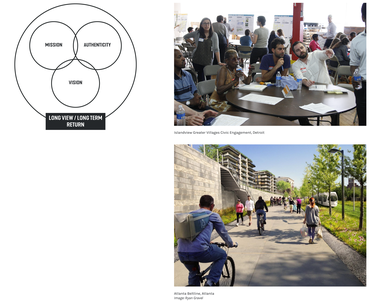
Opportunity
The development of authentic spaces – reflecting the identities and interests of communities and individuals for whom they matter most – is often yielded through opportunity for a broader range of contributors to participate. Creating places and development strategies that allow more people to participate in a range of uses, physical forms, and development formats is not only vital to ensure city residents have greater economic opportunity, but to also reveal how certain spaces may be adapted to future uses. As urban development is increasingly focused into the districts and neighborhoods of our cities, we recognize the imperative to accommodate new uses that yield economic opportunity for more people within existing structures representing context that is meaningful to current residents and stakeholders.
Such development strategies help to maintain the identifiable urban fabric while supporting continued economic opportunity for residents. From the long-running Spitalfields Market in London, to the reutilization of the storied Fisher Building in the New Center district of Detroit.
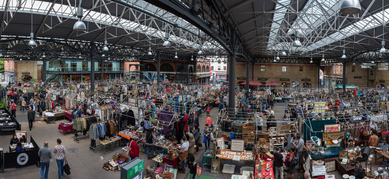
Spitalfields Market in London
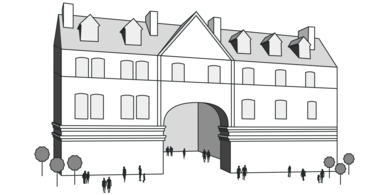
Spitalfields, a covered market in London for over 350 years, is a local institution: a place in which identity and utility converge to yield a durable, identifiable, and emotive relationship between surrounding neighborhoods, the city at large, and the market. Through regenerative investment in 2005, new public spaces were added, creating modern features that accommodate new uses and interests.
Under the direction of The Platform, the Fisher Building – in the New Center district of Detroit – is being reshaped to create an inclusive “third place” for local residents and district employees to utilize. Adapting the 1929 building’s massive and inspiring arcade from a stunning but underutilized interior space to a new dynamic environment that welcomes a wide range of visitors and tenants. Everhard Findlay has worked closely with The Platform to introduce provocative juxtapositions of uses and spaces, including a temporary half-pipe in the building’s arcade. SmithGroup has worked with The Platform to apply complementary design features that allow people to engage the interior and exterior of the building in ways that facilitate interconnectivity between tenants, visitors, and nearby residents. These adaptive opportunities are hallmarks of impactful contemporary urban reinvestment, where the physical domain becomes a differentiating element as it is updated for different purposes.
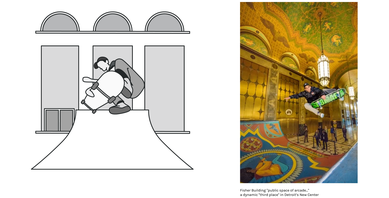
Halfpipe installation by Everhard Findlay; Image Attribution: Vice
Design
As urban redevelopment unfolds, it is not only responsive to market demands, but increasingly burgeoning visions for more inclusive spaces. In these cases, the design and physical manifestation of developed space – at all scales – become important contributors to the broader social, economic, and ecological composition of the city. Sitting at the intersection point of authorship, identity, and opportunity, design is the mediator and driver toward a more cohesive and coordinated physical form of the city. Design has the potential (and the responsibility) to drive the formal articulation of unique market characteristics, community voice, and collective aspiration. It serves as a mediating device between aspiration, reality, and responsibility.
While many may see design as simply the translation of real estate investment decisions into a cultivated physical form, its process – when considered in totality – has the potential to create transformational projects that result in new perspectives and opportunities. Within the context of urban mixed-use development, this is increasingly evident as individual buildings and districts are formed within existing areas, such as underutilized former industrial properties, to yield economic value and access.
Here, design has the capacity to test, iterate, and establish the phased adaptation of spaces – whether from within an individual building or amidst a larger district or city system. It can attract short-term capital and catalytic initiatives that may prove the plausibility of individual developments, and when considered at larger scale, such design characteristics can establish a broader proof-of-concept, allowing small scale, short-term capital to grow into larger long-term investments. Such early iteration allows a broader, more diverse array of contributors to participate, increasing inclusion, broadening authorship in the urban development process, and ensuring speed-to-market.

When urban mixed-use initiatives are prepared for longer-term investment design can remain present, helping to translate the physical lessons learned into the full development. This was the case for the Southwest Waterfront development in Washington, DC, where a larger district-wide concept emerged earlier small-scale initiatives, bringing renewed investment to a formerly set-aside and underutilized waterfront. A cornerstone of the design includes an ample public waterfront promenade, ensuring all residents and visitors are given waterfront access, while activating ground floor retail, restaurants, and theaters. Here again, design – when combined with thoughtful development strategies and mixtures of uses – serves as a mediating device between aspiration, reality, and responsibility – defining a future previously unanticipated.
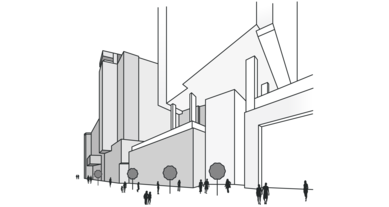
Conclusion
The increasing convergence of mixed-use initiatives within cities remains a potent illustration of the significance of inclusive, visionary, and committed development. It reasserts the growing power of the integrating characteristics of urban environments to support and catalyze multiple, seemingly divergent uses. Since the very foundation of urban form over millennia, cities have demonstrated their durable value, even in the midst of reevaluation of the relevance of place in an increasingly digitally defined world. Our relationship to one another is defined in the spaces of our cities and the convergent environments they support.
